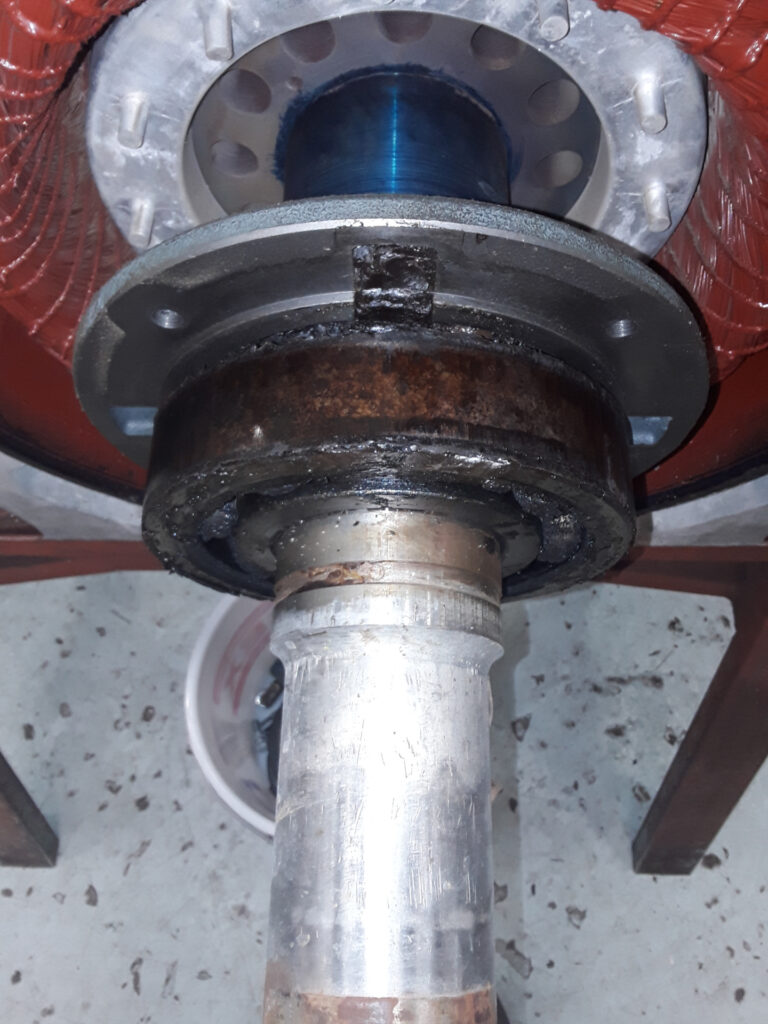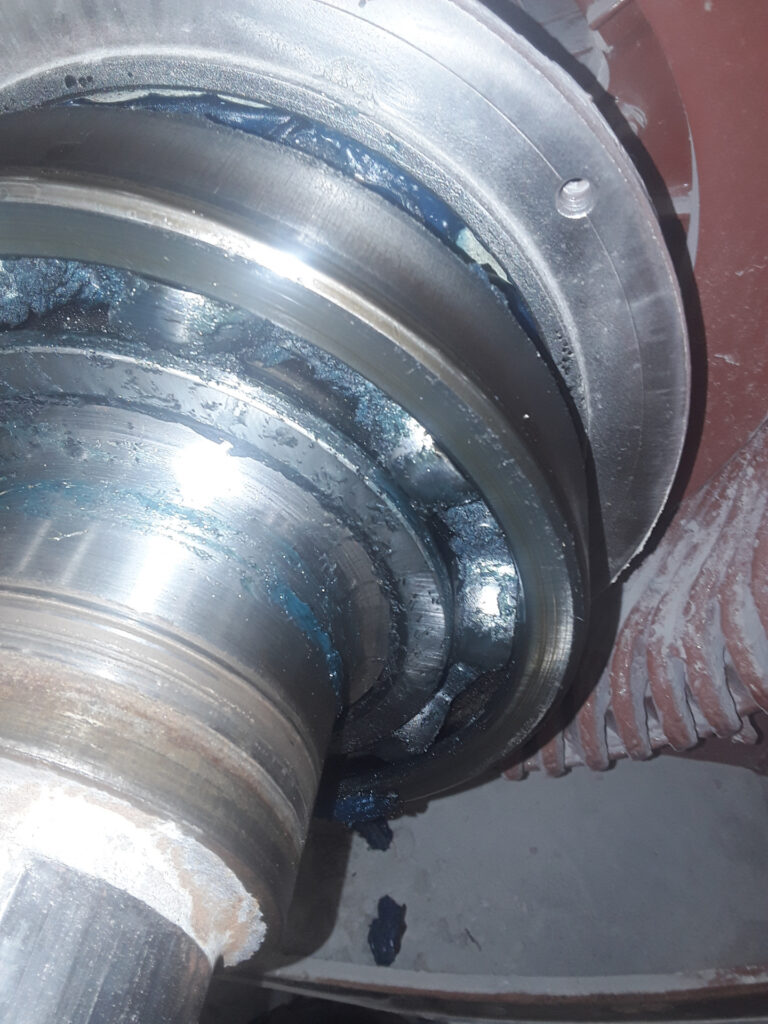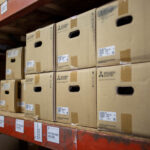Motor Bearing Failure Issues
If you’re having problems with motor bearings, you’re not alone.
Bearing failures make up more than half of all electric motor failures globally. Statistics vary widely but anywhere between 35-75% of bearing failures are preventable.
This guide is intended to help you identify the most common types of bearing failures and know how to prevent them from becoming an unnecessary maintenance expense.
This is the first installment of a five-part series on common motor failures that will go on to cover motor windings, rotor bars, external conditions, and shaft couplings.
Bearing problems account for 51% of all motor failures.
The most common issues with bearings are caused by:
· Under or overlubricating
· Mixing or using the wrong type of lubricant
· Misalignments
· Shaft overloading
· Excessive vibrations
· Overheating
Under or overlubricating bearings
Re-greaseable bearings need regular maintenance to sustain proper lubrication and avoid damaging metal-on-metal contact. Checking your lubrication is especially important after a motor overheating event.
Check with your motor manufacturer for its recommendations on lubrication intervals and proper practices. Most recommend re-greasing motor bearings after every 2,000 hours of operation or every three months, whichever comes first. Be sure to follow your maintenance schedule and keep records to ensure everything is being performed according to plan.
Improperly regreased motor bearings are far more likely to fail than those running with outdated grease.
– Motor tip
Overgreasing motors, on the other hand, defeats the general purpose of greasing. Excess grease can build up in the system so thick that it impedes the bearing’s movement, rather than making it easier. It’s like a person trying to use a slip and slide that’s covered in mud. The resulting friction leads to overheating.
Excess grease can also seep into the windings and cause major electrical and mechanical problems with your motors.
To prevent overgreasing, begin the re-greasing process by making sure the grease relief valves are open and clear of any dirt or hardened grease. Then remove the grease outlet plug or open the outlet vale and slowly pump grease into the bearing while the motor is running. Add grease slowly or the grease gun could create too much air pressure. Stop greasing if you feel abnormal back pressure building up.
Mixing or using the wrong type of lubricant on bearings
Greases with different base materials won’t blend together, like oil and water. If left unaddressed, one of the greases could harden into a sandlike substance that pulls lubrication away from the bearings.
Typically, bearing damage will occur before anyone can tell there’s a problem. However, if you find before it’s too late that you’ve used the wrong lubricant, fully purge the grease from the motor then replace it with a different type. The safest bet is to stick the type of grease that the manufacturer recommends on the motor’s nameplate or datasheet so you never risk compatibility problems.


Misalignment
Motors and applications that aren’t aligned won’t work. Misalignment binds the mechanical connection between the machines, resulting in increased pressure and vibration. Extreme binding can deflect shafts, causing undue stress on bearings and other components.
When performing your alignments, temperature can be a key ingredient for a successful outcome. Your motor must be aligned under operating temperatures. Machines aligned at room temperature may fall out of alignment once the motor reaches its operating temperature – especially on applications at 3,600 RPM and above.
While some vibration can be normal, an extreme overnight increase could mean trouble. If this happens, shut the motor down or you could risk malfunction of important components, such as the drive shaft. If you can’t afford to shut it down right away, try and conduct a vibration analysis as soon as possible. Schedule a downtime event based on the results you find.
Misalignment is especially problematic for applications like compressors that usually don’t have soft couplings to alleviate excess pressure. As a best practice, operating and nonoperating alignment should be checked about every 2,000 hours of runtime. Vibration analysis equipment can be used to catch small misalignments before they become big problems.
Shaft overload
Overloading the motor puts more pressure on the shaft, potentially causing belt deflection, increased vibrations, and internal heat. This can break down lubrication and subsequently damage the bearings and shaft. A bearing usually fails before the shaft, but that’s not always the case.
The only thing to do with an overloaded shaft is shut down and find the source. If you’re experiencing a torsional overload – meaning surplus torque is twisting the shaft – your equipment will most likely shut down automatically.
Uncouple the application and run the motor by itself. If the motor runs fine, check for binding in the equipment to see if a gearbox, screw compressor, or pump is locking up.
Perform belt deflection testing for radial overloads due to increased belt loading. Radial overloads are caused by external factors like a drastic change to the output of the driven equipment.
Excess vibration on bearings
As you’ve likely noticed, excessive motor vibration can be a contributor and/or symptom of various motor failures. If left untreated, excess vibrations can damage every part of a motor, from the shaft to the bearings to the insulation.
Some vibration is normal, so refer to the severity tolerances set by ISO 10816 to see if your vibration levels are acceptable. Beyond that, you need to know the source of your excess vibration to determine the best solution.
The simplest solution is to have an expert perform a vibration analysis, determine the root cause, and plan for appropriate service.


Overheating
Bearings must be designed to cope with the environmental temperature of their working environment.
Bearings are made with tight tolerances. When excess heat reaches the rotor, the shaft expands into the necessary clearance space within the bearing and crowds out lubrication. This creates more friction and eventually destroys bearings.
Motors run warm to the touch, but if it can burn skin, it’s too hot. If you can smell paint burning, it’s way too hot, and you’re probably about to have a breakdown.
Selecting bearings with more clearance space allows for thermal expansion and higher external operating temperatures. It can increase uptime in multiple ways. You can double the greasing intervals and life of your bearings for every 15 C cooler the motor runs below intended operating temperature.
You can also add cooling fans to push more air into the motor and dissipate excess heat.
Find the failure, know the fix
Bearings can go through a lot over the course of a work day. There are many different ways to damage bearings, yet many of the symptoms are the same.
It’s important to know the exact cause of your motor failure to find the right solution. Reach out to us if you need help to protect or repair your motors against bearing failure. Our electric motor experts are ready to answer your questions.
Bearing issues are among many other common causes of motor failure. Read on to learn about possible issues with motor winding, rotor bars, external conditions, and shaft coupling.
If you would like to discuss your maintenance procedure or have questions about how to prevent bearing failures, reach out to a sales engineer at VFDs.com for additional help.
Got Questions About Your Generator? We Can Help!
Call 800-595-5315 Or Connect With Our Expert Technicians Here:










